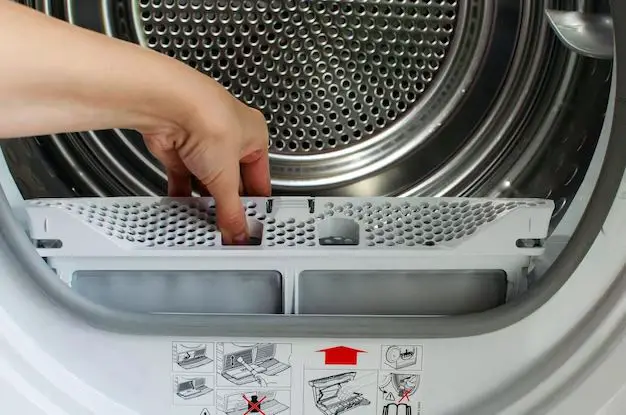Venting a dryer under a floor is possible but comes with some important considerations. The key factors to think about when deciding whether or not to vent a dryer under a floor include meeting code requirements, fire safety, moisture buildup, lint accumulation, and accessibility for cleaning.
Page Contents
Code Requirements
Most building codes require that dryer vents meet certain requirements. Some key codes to be aware of include:
- The maximum allowable length of a dryer duct is 35 feet. This includes both horizontal and vertical lengths.
- Dryer ducts should be smooth on the inside without any ridges or screws protruding in.
- The duct should be 4 inches in diameter and made of a rigid metal material.
- Ducts should vent directly outdoors and have a backdraft damper installed.
- No more than two 90 degree turns should be used.
Venting under a floor often involves longer duct runs and more turns which may put the installation out of compliance. Check your local building codes to ensure any under floor venting plan meets the requirements.
Fire Safety
Lint and moisture buildup in dryer vents are major fire hazards. Venting under a floor increases the risks of both of these issues. Lint can accumulate in the ducts over time, especially with longer runs. This lint is highly flammable. Moisture can also condense in the underground ducting and reduce airflow. The combination of lint and moisture buildup leads to much greater fire risks.
It is critical to minimize fire risks by using smooth and short ducting, avoiding too many turns, and regularly cleaning out the ducts. Using ducting that is too small in diameter can also increase fire risk by obstructing airflow. Fire-retardant thimbles should be used when passing through combustible flooring. Routinely inspecting and cleaning ducts is also essential.
Moisture Buildup
Venting underground creates a high risk for moisture buildup as warm, humid air condenses on the cooler duct surfaces. This can lead to mold and mildew growth, reduced airflow, longer drying times, and damage to the ducts. Mold spores from underground venting can even get blown back into the home. Here are some tips to minimize moisture buildup:
- Use smooth metal rigid or flexible ducting.
- Insulate ducts to keep air warm.
- Slope ducts slightly down towards exterior vent.
- Avoid sags and low spots where moisture can collect.
- Seal connections with aluminum foil tape to prevent condensation.
- Consider using a larger 6” diameter duct.
Lint Buildup
Lint and other debris readily accumulate in dryer ducting over time. This is exacerbated with longer duct runs and more turns. Lint buildup is a fire hazard and reduces airflow. Ducts under floors are difficult to access and clean. Special brushes are needed to reach long duct runs. Consider installing ducting with large radius sweeps rather than sharp 90 degree elbows to reduce snagging of lint. Straight runs are best if possible. Also inspect and clean ducts frequently.
Accessibility
Under floor dryer ducts are inherently difficult to access for inspection and cleaning. For horizontal floor runs, consider installing access panels at key points. Vertical runs through foundations require more work to clean. You may need to snake a rotary brush cleaner down the full run annually to clean lint buildup. CO alarms should also be installed to provide early warning of any venting issues.
Here is a comparison of the key pros and cons for venting a dryer under the floor:
| Pros | Cons |
|---|---|
|
|
Best Practices
If you do decide to vent under a floor, follow these best practices:
- Use smooth metal rigid or semi-rigid ducting, not plastic venting.
- Size ducts at 4 inches in diameter, or larger.
- Ensure total duct run is less than 35 feet.
- Limit duct run to include no more than two 90 degree turns.
- Slope ducts down towards outdoor vent.
- Seal all connections thoroughly.
- Install access panels at strategic points.
- Clean ducts annually using a specialized lint brush.
- Consider installing booster fans if duct run is long.
- Check frequently for lint buildup at exterior vent.
- Follow all local building codes.
Conclusion
Venting a dryer under the floor is possible with proper planning and vigilance. The most critical requirements are to use smooth, rigid, properly sized ducting, make the run as short and straight as feasible, adequately seal connections, and frequently inspect and clean the entire system. This will provide the best defense against excessive lint and moisture buildup. Routine cleaning is essential. Following building codes and safety best practices will help minimize the fire and moisture risks inherent with under floor venting.
